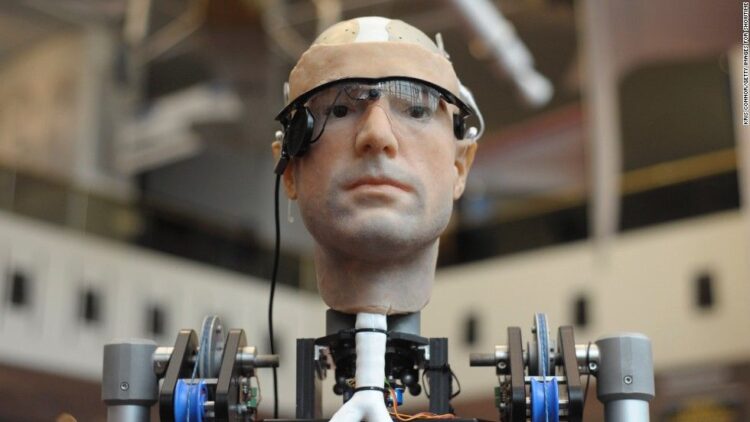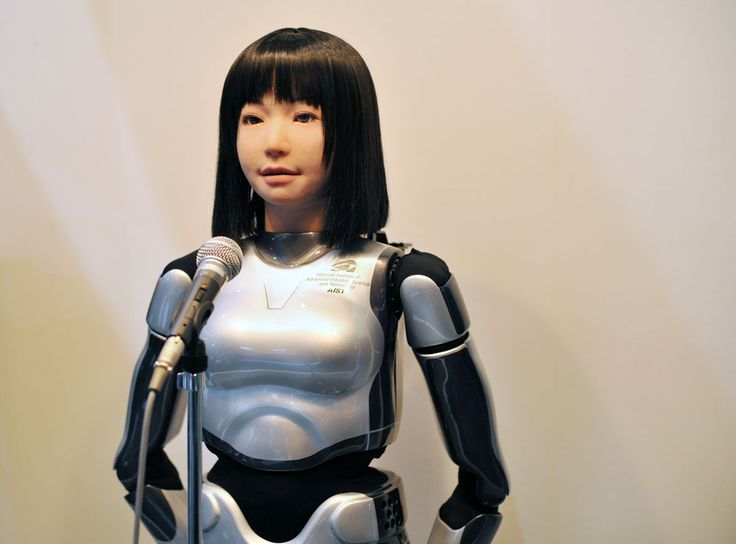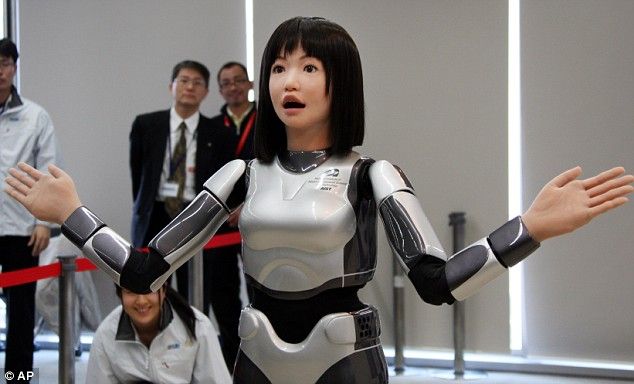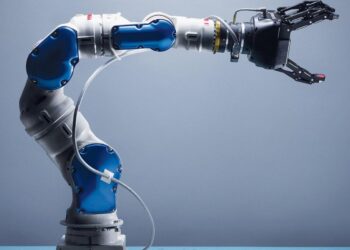For decades, humanoid robots existed largely within the realm of science fiction, captivating our imaginations with their human-like forms and intelligent capabilities. Today, however, these sophisticated machines are rapidly transitioning from fictional concepts to tangible realities, poised to revolutionize various aspects of our daily lives. Humanoid robots, designed to mimic human appearance and movement, are not merely mechanical marvels; they are increasingly becoming versatile tools capable of performing complex, nuanced tasks in diverse environments. This evolution promises a future where robots don’t just work for us, but potentially alongside us, seamlessly integrating into our homes, workplaces, and even public spaces, truly evolving our daily tasks in profound ways.
The Journey of Humanoid Robotics: From Fiction to Function
To fully appreciate the current trajectory and future potential of humanoid robots, it’s essential to understand the scientific and engineering journey that has brought them to this pivotal moment. It’s a story of ambition, breakthroughs, and persistent challenges.
A. Early Concepts and Fictional Inspirations
The idea of artificial beings resembling humans dates back centuries in mythology and literature. From ancient automatons to the captivating androids of modern cinema, the concept of a humanoid has long fascinated humanity.
- Mythological Automata: Ancient Greek myths described mechanical servants, while medieval engineers crafted intricate clockwork figures that mimicked human actions. These early concepts demonstrated a fundamental human desire to replicate ourselves.
- Literary Androids and Robots: The term “robot” itself, coined by Karel Čapek in 1920, and Isaac Asimov’s “Three Laws of Robotics” laid foundational ideas for the ethical and functional roles of robots, particularly humanoid ones, in society. Films like “Metropolis” and “Star Wars” further cemented these images in the public consciousness.
- Early Robotic Explorations: Initial robotic developments in the mid-20th century were primarily industrial, focusing on fixed, repetitive tasks. Early attempts at bipedal locomotion or human-like manipulation were rudimentary and often unstable, highlighting the immense engineering challenges involved.
B. Engineering Breakthroughs: Enabling Humanoid Capabilities
The leap from conceptual automata to functional humanoid robots required significant advancements across multiple scientific and engineering disciplines.
- Advanced Actuation and Motors: Developing compact, powerful, and precise motors (actuators) that can mimic the flexibility and strength of human muscles and joints was crucial. This includes electric, hydraulic, and pneumatic systems capable of dynamic movement.
- Sensors and Perception: Humanoid robots need to perceive their environment. Breakthroughs in sensor technology—such as high-resolution cameras, LiDAR (Light Detection and Ranging) for depth sensing, force sensors for tactile feedback, and inertial measurement units (IMUs) for balance—provide robots with a rich understanding of their surroundings.
- Real-time Control and Balance: Achieving stable bipedal locomotion, especially on uneven terrain, is incredibly complex. Advances in control theory, dynamic balance algorithms (like those used by Boston Dynamics’ Atlas), and robust gait planning have enabled humanoids to walk, run, and even jump with impressive agility.
- AI and Machine Learning: Modern humanoid robots are not merely pre-programmed. They leverage sophisticated AI and machine learning algorithms for:
- Object Recognition: Identifying and categorizing objects in their environment.
- Speech Recognition and Natural Language Processing: Understanding human commands and engaging in natural conversation.
- Path Planning and Navigation: Autonomously mapping environments and planning efficient, obstacle-avoiding routes.
- Reinforcement Learning: Learning complex tasks through trial and error, adapting to new situations.
- Battery Technology: The need for untethered operation and sufficient power for complex movements necessitates advancements in compact, high-density battery technologies that can sustain long operational periods.
C. The Justification for Humanoid Form: Beyond Aesthetics
While the human form is intuitive for us, it’s not always the most efficient for purely mechanical tasks. However, for many applications, the humanoid form offers distinct advantages.
- Designed for Human Environments: Our world is built for humans—doorways, stairs, tools, vehicles, and furniture are all designed for bipedal, two-armed beings. A humanoid robot can navigate and interact with these environments without requiring massive re-engineering of existing infrastructure.
- Tool Compatibility: Humanoid hands (or end-effectors designed to resemble hands) allow robots to use existing human tools, from wrenches to screwdrivers to kitchen utensils, broadening their utility without specialized robotic equipment.
- Social Acceptance and Interaction: For roles involving human interaction (e.g., healthcare, customer service, education), a human-like appearance can foster greater trust, familiarity, and ease of communication, reducing anxiety or intimidation.
- Versatility and Generalization: While specialized robots excel at narrow tasks, the humanoid form aims for broad versatility, theoretically capable of performing a wide range of human-centric tasks in diverse settings, making them adaptable general-purpose robots.
The ongoing advancements in these areas are propelling humanoid robots from laboratory curiosities to viable solutions for real-world challenges.
Core Capabilities and Defining Characteristics of Modern Humanoid Robots
Modern humanoid robots are defined not just by their form, but by a sophisticated suite of capabilities that enable them to operate in complex, human-centric environments.
A. Advanced Locomotion and Mobility
Beyond simple walking, modern humanoids exhibit remarkable mobility.
- Dynamic Bipedalism: The ability to walk, run, and maintain balance on two legs, even on uneven terrain, stairs, or inclines. This is a significant engineering feat, allowing them to navigate environments designed for humans.
- Agility and Dexterity: Capable of complex movements like crouching, jumping, opening doors, and recovering from pushes or falls. Some can even perform parkour-like maneuvers.
- Navigation Autonomy: Using Simultaneous Localization and Mapping (SLAM) with LiDAR and cameras, robots can build maps of unknown environments, localize themselves within those maps, and plan efficient, obstacle-avoiding paths in real-time.
- Adaptability to Surfaces: Sensors and sophisticated control algorithms allow them to adjust their gait and balance for different surfaces like gravel, carpet, or slippery floors.
B. Fine Motor Manipulation and Dexterity
The ability to interact with and manipulate objects in the environment is crucial for performing daily tasks.
- Multi-fingered Hands: Many humanoids feature advanced robotic hands with multiple fingers and degrees of freedom, allowing for grasping a wide variety of objects with varying shapes and weights.
- Tactile Sensing: Force and pressure sensors in grippers and fingertips provide crucial haptic feedback, allowing robots to adjust their grip strength, preventing damage to fragile objects or ensuring a secure hold.
- Tool Use: The ability to pick up, manipulate, and effectively use human-designed tools (e.g., screwdrivers, drills, cleaning utensils) is a key advantage of the humanoid form, enabling them to perform a vast range of tasks without requiring specialized custom equipment for every job.
- Object Recognition and Pose Estimation: Coupled with manipulation, robots use computer vision to identify objects, understand their orientation (pose), and plan grasping strategies.
C. Human-Robot Interaction (HRI) and Communication
For seamless integration into human environments, humanoids need robust communication and interaction capabilities.
- Natural Language Processing (NLP): Understanding spoken commands, questions, and even nuanced human language, allowing for intuitive voice control.
- Speech Synthesis: Generating natural-sounding speech to communicate information, ask clarifying questions, or provide updates.
- Emotion Recognition (Limited): Some advanced humanoids attempt to recognize basic human emotions through facial expressions or voice tone, allowing for more empathetic or appropriate responses.
- Gesture and Body Language: The ability to use gestures (e.g., pointing, waving) and body language to convey information or respond to human cues, enhancing natural interaction.
- Social Gaze and Eye Contact: For robots designed for social interaction, maintaining appropriate gaze and eye contact can make interactions feel more natural and less unsettling.
D. Learning and Adaptation (AI/ML Driven)
Modern humanoids are not just executing pre-programmed scripts; they are learning and adapting.
- Reinforcement Learning: Robots can learn new motor skills or task execution strategies through trial and error, often in simulated environments before physical deployment.
- Imitation Learning/Learning from Demonstration: Robots can be taught new tasks by observing human demonstrations, making programming more intuitive.
- Adaptive Control: Adjusting their movements and strategies in real-time based on unexpected environmental changes or object properties.
- Error Recovery: The ability to detect when a task has gone wrong and attempt to recover or seek human assistance, rather than simply failing.
E. Safety Features and Human-Centric Design
As robots increasingly work alongside humans, safety becomes paramount.
- Collision Avoidance: Using sensors to detect and avoid collisions with humans or other obstacles.
- Force Limiting: Designing joints and actuators to limit forces exerted by the robot, preventing injury in case of accidental contact.
- Human-Safe Materials: Using materials and designs that minimize harm in case of contact.
- Clear Communication: Using visual (lights, screens) and auditory cues to clearly indicate their status, intent, and operational mode to surrounding humans.
These capabilities are rapidly advancing, pushing humanoid robots towards more complex and general-purpose roles.
Transformative Applications: How Humanoids are Evolving Daily Tasks
The unique combination of human-like form and advanced AI-driven capabilities positions humanoid robots to revolutionize a multitude of sectors, transforming daily tasks for individuals and industries alike.
A. Industrial Automation and Logistics
Beyond traditional fixed-arm industrial robots, humanoids can tackle more complex, adaptable tasks in manufacturing and supply chain.
- Flexible Manufacturing: Performing assembly tasks, quality control inspections, or operating machinery in environments designed for humans, allowing for rapid retooling and smaller batch production without extensive re-engineering of the factory floor.
- Warehouse Management: Picking and packing irregular items, loading/unloading trucks, or navigating complex warehouse layouts to retrieve goods, augmenting human workers in logistics centers.
- Dangerous or Repetitive Tasks: Taking over tasks that are hazardous, ergonomically challenging, or highly repetitive for human workers (e.g., working with heavy components, in extreme temperatures, or performing continuous welding).
- Factory Floor Assistance: Providing support to human workers, fetching tools, transporting materials, or assisting with setup procedures, improving overall efficiency and safety.
B. Healthcare and Elderly Care
The human-like form makes humanoids particularly suitable for sensitive roles in healthcare.
- Assisting Healthcare Professionals: Carrying medical supplies, fetching equipment, cleaning rooms, or assisting with patient transfers, freeing up nurses and doctors for more critical care.
- Elderly Companionship and Assistance: Providing non-medical assistance to the elderly in their homes, such as reminding them to take medication, helping with light chores, or simply offering conversation and companionship to combat loneliness.
- Rehabilitation Support: Guiding patients through rehabilitation exercises with precise movements and personalized feedback, making therapy more engaging and effective.
- Remote Presence and Telemedicine: Acting as a physical avatar for doctors or family members to interact with patients remotely, especially useful in isolated areas or for home care.
C. Retail and Customer Service
Humanoids can enhance customer experience and operational efficiency in public-facing roles.
- Customer Greeters and Information Kiosks: Welcoming customers, providing directions, answering frequently asked questions, or guiding them to specific products in stores, airports, or museums.
- Shelf Stocking and Inventory Management: Navigating retail aisles to restock shelves, identify misplaced items, or conduct automated inventory checks, optimizing store operations.
- Personalized Shopping Assistance: Offering tailored product recommendations based on customer preferences or past purchases, enhancing the shopping experience.
- Post-Purchase Support: Providing basic troubleshooting or return assistance, potentially reducing wait times for human staff.
D. Education and Research
Humanoids offer engaging platforms for learning and scientific discovery.
- Educational Assistants: Helping teachers with repetitive tasks, engaging students with interactive lessons, or demonstrating scientific concepts in classrooms.
- Robotics Research Platforms: Serving as versatile platforms for researchers to develop and test advanced AI algorithms, new control systems, or human-robot interaction paradigms.
- Language Learning Companions: Providing interactive practice for language learners, responding in real-time and correcting pronunciation or grammar.
- Therapeutic Support: Assisting in therapy for children with autism or other developmental needs, providing consistent and predictable interactions.
E. Hazardous Environment Exploration and Disaster Response
For environments too dangerous for humans, humanoids offer a safe and capable alternative.
- Disaster Recovery: Navigating unstable debris fields, inspecting damaged infrastructure, or searching for survivors in areas affected by earthquakes, fires, or nuclear incidents.
- Chemical and Nuclear Facilities: Performing inspections, maintenance, or material handling in environments with hazardous chemicals or radiation, protecting human workers.
- Space Exploration: Future humanoids could perform complex tasks on other planets or within space stations, assisting astronauts or conducting independent research in hostile environments.
- Mine Exploration: Inspecting unstable mine shafts or retrieving samples from dangerous underground locations.
F. Domestic Assistance and Home Automation
In the long term, humanoids could become invaluable assistants within our homes.
- Household Chores: Performing tasks like cleaning, folding laundry, washing dishes, or preparing simple meals, significantly easing the burden of daily chores.
- Personal Assistance: Helping individuals with mobility challenges, fetching items, or providing support for daily routines.
- Security and Monitoring: Patrolling homes, detecting intruders, or monitoring for emergencies (e.g., gas leaks, fires) and alerting authorities.
- Companionship: Offering social interaction and assistance, particularly for the elderly or those living alone.
Challenges and Ethical Considerations in Humanoid Robot Adoption
Despite their immense potential, the widespread integration of humanoid robots into daily life presents a complex array of technical, economic, and ethical challenges that must be carefully addressed.
A. Technical Limitations and Robustness
Current humanoid robots, while impressive, still face significant technical hurdles for ubiquitous deployment.
- Battery Life and Power Efficiency: Complex movements and onboard computing demand substantial power. Current battery technologies often limit operational time, requiring frequent recharging or larger battery packs, which add weight and cost.
- Robustness in Unstructured Environments: Construction sites, homes, and public spaces are far more complex and unpredictable than factory floors. Humanoids need greater robustness against falls, dust, water, and unexpected obstacles to operate reliably in such varied settings.
- Perception and Decision-Making in Ambiguity: While AI is advancing, robots still struggle with ambiguity, common sense reasoning, and rapid adaptation to completely novel situations. A dropped tool or a sudden human movement can pose significant challenges.
- Cost of Production and Maintenance: Producing advanced humanoid robots with sophisticated sensors, actuators, and computing power remains very expensive. Their maintenance, requiring specialized skills, also contributes to high operational costs, limiting widespread adoption.
- Dexterity vs. Generalization Trade-off: While general-purpose humanoids are the goal, achieving human-level dexterity for all tasks is immensely difficult. Often, specific tasks can be done more efficiently by specialized robots or human workers.
B. Economic and Workforce Impact
The integration of humanoids will inevitably reshape labor markets, leading to economic and social adjustments.
- Job Displacement Concerns: A primary concern is that robots will displace human workers, leading to unemployment in certain sectors. This fear requires proactive strategies for workforce retraining and job creation in new areas.
- Skill Gap for New Roles: Operating, maintaining, programming, and troubleshooting humanoid robots will require a new set of specialized skills, creating a potential skill gap if not addressed through education and training initiatives.
- Economic Inequality: If the benefits of automation are not broadly distributed, there’s a risk of exacerbating economic inequality, with wealth concentrating among those who own and control the robotic technology.
- Initial Investment vs. ROI: As mentioned, the high upfront cost of humanoid robots means that demonstrating a clear and swift Return on Investment (ROI) can be challenging for many businesses, particularly small and medium-sized enterprises (SMEs).
C. Ethical, Social, and Psychological Considerations
The human-like nature of these robots raises unique ethical and societal questions that demand thoughtful consideration.
- Safety and Accountability: Who is responsible when a humanoid robot causes an accident or makes a harmful decision? Establishing clear legal frameworks for liability and ensuring robust safety measures are paramount.
- Privacy Concerns: Humanoids equipped with cameras, microphones, and other sensors in homes or public spaces raise significant privacy concerns regarding data collection, storage, and usage.
- Emotional and Social Impact: How will human interaction with humanoids affect social development, particularly for children or the elderly? Will it lead to emotional detachment or alter perceptions of human relationships? The uncanny valley phenomenon (where humanoids appear eerily almost human) can also cause discomfort.
- Autonomy and Control: As robots become more autonomous, questions arise about the extent of their decision-making capabilities and the degree of human oversight required. How do we ensure they operate ethically and align with human values?
- Human Dignity and Dehumanization: What are the implications of using humanoids for tasks traditionally performed by humans, particularly in caregiving roles? Does it diminish human dignity or lead to a dehumanization of certain interactions?
D. Regulatory and Legal Frameworks
Existing regulations are often insufficient to address the complexities introduced by autonomous humanoid robots.
- Lack of Standardized Regulations: There is a global absence of consistent legal and ethical frameworks governing the design, deployment, and operation of advanced autonomous robots.
- Certification and Licensing: Establishing processes for certifying the safety and reliability of humanoid robots for various applications will be crucial.
- Data Protection Laws: Ensuring that robot-collected data complies with existing and future data protection and privacy laws (e.g., GDPR, CCPA) is a continuous challenge.
Best Practices for Responsible Humanoid Robot Integration
To ensure humanoid robots benefit society broadly and mitigate potential downsides, a multi-faceted approach focusing on responsible development, ethical deployment, and societal adaptation is essential.
A. Prioritize Human-Robot Collaboration (Cobotics)
Instead of focusing solely on full automation, emphasize human-robot collaboration (cobotics). Design humanoids to work alongside humans, augmenting human capabilities rather than simply replacing them. This involves:
- Intuitive Interaction: Making robots easy and safe for humans to interact with.
- Shared Workspaces: Designing robots that can operate safely in shared environments with people.
- Complementary Skills: Leveraging robots for repetitive, precise, or heavy tasks, while humans focus on complex problem-solving, creativity, and nuanced social interactions.
B. Invest Heavily in Workforce Reskilling and Education
Recognize that job roles will transform. Proactively invest in comprehensive reskilling and upskilling programs for the existing workforce. This should train workers in:
- Robot Operation and Supervision: How to effectively manage and oversee robotic systems.
- Robot Maintenance and Repair: Specialized skills for troubleshooting and fixing complex robotic hardware.
- Robot Programming and AI Model Training: Developing the technical expertise to customize and improve robotic performance.
- Data Analysis and Interpretation: Understanding the data generated by robots for operational insights. This proactive approach helps manage job displacement concerns and creates new career pathways.
C. Develop Robust Safety Standards and Ethical Guidelines
Work collaboratively across industry, academia, government, and civil society to establish and adhere to rigorous safety standards and comprehensive ethical guidelines for humanoid robots.
- Safety-by-Design: Integrate safety features into the robot’s design from the outset (e.g., force limiting, emergency stops, fail-safes).
- Transparency and Explainability: Design AI systems within robots to be more transparent and explainable, allowing humans to understand their decision-making processes.
- Accountability Frameworks: Develop clear legal frameworks for responsibility and liability in case of accidents or unintended consequences involving autonomous robots.
- Ethical AI Principles: Embed ethical AI principles (fairness, transparency, privacy, accountability) into the development and deployment lifecycle of humanoid robots.
D. Ensure Data Privacy and Security by Design
Given that humanoids operate in sensitive environments and collect vast amounts of data, data privacy and cybersecurity must be paramount.
- Privacy-by-Design: Incorporate privacy considerations from the initial design phase, minimizing data collection, anonymizing data where possible, and ensuring secure storage.
- Robust Cybersecurity: Protect robotic systems and their communication networks from cyber threats, unauthorized access, and data breaches.
- Transparent Data Policies: Clearly communicate to users what data robots collect, how it’s used, and who has access to it, building trust and ensuring compliance with regulations like GDPR.
E. Focus on Specific, High-Value Use Cases Initially
Instead of attempting to deploy humanoids for all tasks at once, concentrate on specific, high-value use cases where they can demonstrate clear and measurable benefits. This might include:
- Dull, Dirty, or Dangerous (3D) Tasks: Automating jobs that are inherently unsafe, repetitive, or undesirable for humans.
- Precision and Consistency: Leveraging robots for tasks requiring superhuman accuracy and repeatability.
- Assistance, Not Replacement: Deploying robots to assist humans with physically demanding or routine tasks, thereby enhancing human productivity and well-being. Successful initial deployments can build confidence and provide valuable learning experiences before broader integration.
F. Foster Public Engagement and Education
Combat misinformation and alleviate public anxieties by fostering open public engagement and education about humanoid robots.
- Realistic Expectations: Communicate what robots can and cannot do realistically, avoiding overhyped claims.
- Benefit Communication: Clearly articulate the societal benefits of robotic integration, such as improved safety, higher quality of life, and economic growth.
- Dialogue and Feedback: Create platforms for public dialogue, allowing citizens to voice concerns and contribute to the ethical development and deployment of these technologies.
G. Design for Adaptability and Continuous Improvement
The field of robotics is rapidly evolving. Design humanoid robot systems for adaptability and continuous improvement.
- Modular Software and Hardware: Enable easy updates and upgrades to robotic capabilities.
- Over-the-Air Updates: Allow for remote software updates to deploy new functionalities or security patches.
- Data-Driven Learning: Continuously collect and analyze performance data to identify areas for improvement and train more effective AI models for the robots.
The Future Trajectory of Humanoid Robots
The current advancements in humanoid robotics are just the beginning. The next decades promise an even more profound integration of these machines into the fabric of society, driven by continued technological breakthroughs and evolving societal needs.
A. Enhanced Autonomy and General Intelligence
Future humanoids will exhibit significantly greater autonomy and general intelligence.
- Common Sense Reasoning: Improved AI will allow robots to better understand context, make common sense judgments, and handle novel, unstructured situations more effectively.
- Adaptive Learning in Real-World: Robots will learn new skills more rapidly and adapt to dynamic environments with minimal human intervention, possibly even through self-supervised learning or collective intelligence from other robots.
- Emotional Intelligence (Limited): While true consciousness remains distant, robots may develop more sophisticated capabilities to perceive and respond to human emotional states in nuanced ways, enhancing their utility in caregiving and service roles.
B. Cost Reduction and Mass Production
As technology matures, the cost of producing humanoid robots will significantly decrease, making them more accessible for a wider range of applications and consumers. This will be driven by economies of scale, advancements in manufacturing techniques, and the development of more affordable components. Mass production could bring prices down to levels comparable with high-end automobiles.
C. Specialization within Humanoid Form Factors
While general-purpose humanoids are a goal, the future may also see increasing specialization within the humanoid form factor. This means robots optimized for:
- Specific Industrial Tasks: Humanoids with specialized end-effectors or enhanced strength for particular manufacturing or construction jobs.
- Personalized Care: Robots designed specifically for elder care, with features tailored for interaction with the elderly or individuals with disabilities.
- Extreme Environments: Humanoids built with enhanced resilience for space, deep-sea, or hazardous material handling.
D. Seamless Human-Robot Collaboration (HRC)
The future workplace and home will see near-seamless Human-Robot Collaboration (HRC).
- Intuitive Communication: Humans and robots will communicate naturally through speech, gestures, and even shared digital interfaces.
- Dynamic Task Allocation: AI will intelligently allocate tasks between humans and robots based on real-time conditions, skill sets, and safety considerations.
- Shared Dexterity: Robots will physically assist humans in intricate tasks, acting as intelligent extensions of human capabilities.
E. Robotics as a Service (RaaS) Business Models
The proliferation of Robotics as a Service (RaaS) models will democratize access to humanoid robots. Instead of purchasing expensive hardware, businesses and even individuals could subscribe to robotic services, paying for robotic capabilities as needed. This will lower entry barriers and accelerate adoption across various sectors.
F. Integration with the Metaverse and Digital Twins
Humanoid robots will increasingly interact with and benefit from the emerging metaverse and digital twin technologies.
- Digital Twins for Robots: Creating virtual replicas of physical humanoids to simulate complex tasks, test new software updates, and predict maintenance needs without affecting the physical robot.
- Metaverse as Training Ground: Robots learning and refining skills in highly realistic virtual environments before deployment in the real world.
- Robotic Avatars in Metaverse: Humanoids acting as physical avatars for individuals within the metaverse, allowing for physical interaction in real-world spaces controlled from virtual realms.
Conclusion
Humanoid robots are no longer confined to the pages of science fiction; they are rapidly becoming a tangible reality, poised to fundamentally reshape the fabric of our daily lives. By combining human-like form and dexterity with cutting-edge AI and automation, these machines are evolving beyond simple tools to become versatile assistants, capable of performing an increasingly complex array of tasks in our homes, factories, hospitals, and even hazardous environments.
While the journey towards widespread integration presents significant technical hurdles, economic considerations, and profound ethical questions, the trajectory is clear. By prioritizing responsible development, investing in workforce reskilling, building robust safety protocols, and fostering a culture of human-robot collaboration, we can ensure that this new era of robotics is beneficial for all. Humanoid robots represent more than just technological marvels; they are a blueprint for a future where intelligent machines extend human capabilities, enhance safety, and unlock unprecedented efficiencies, truly evolving our daily tasks and shaping a more automated, capable, and perhaps, more comfortable world.










